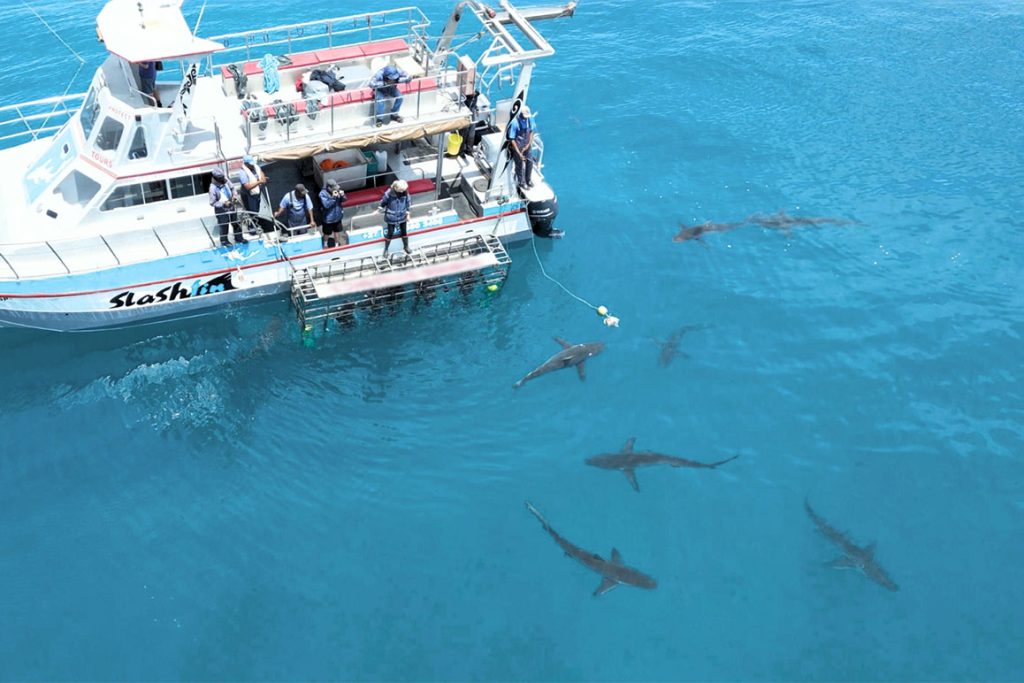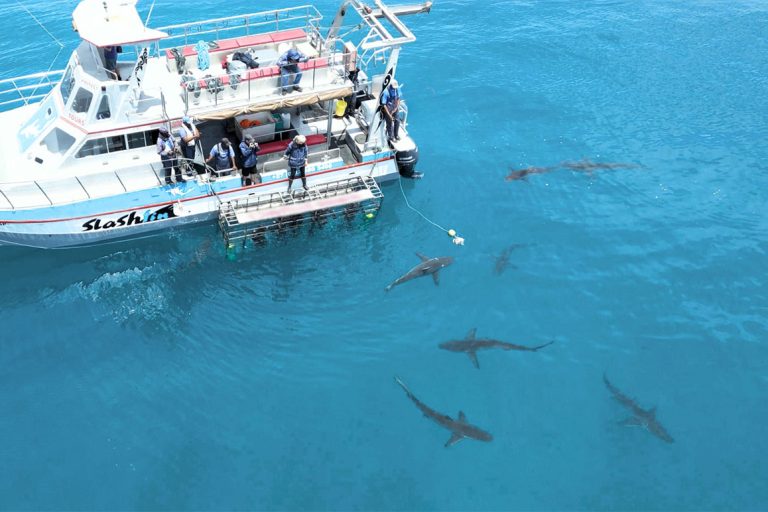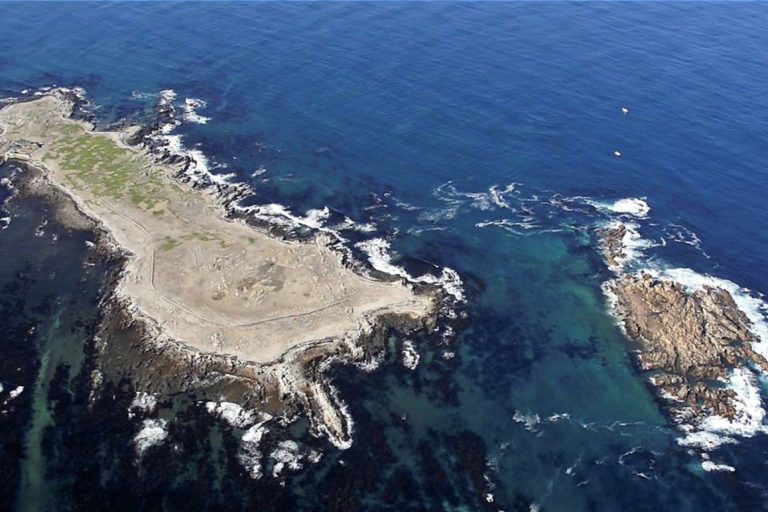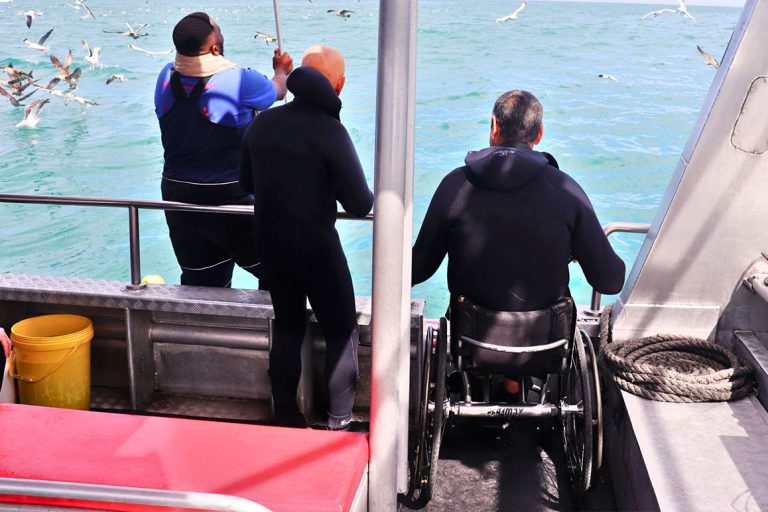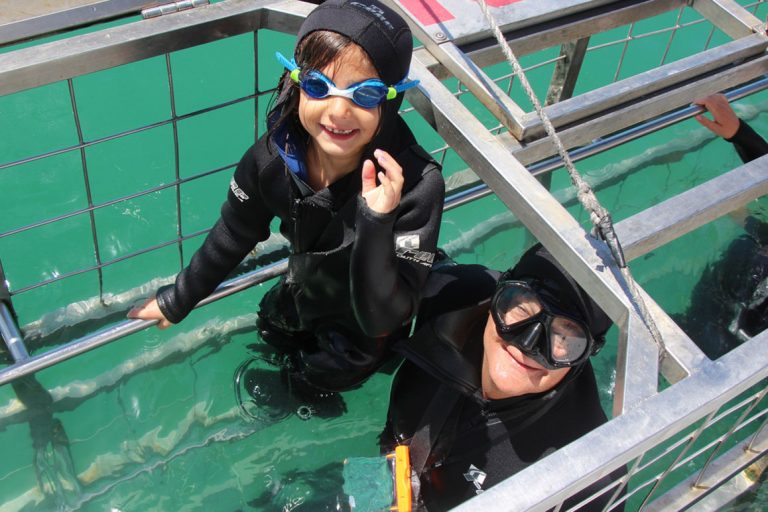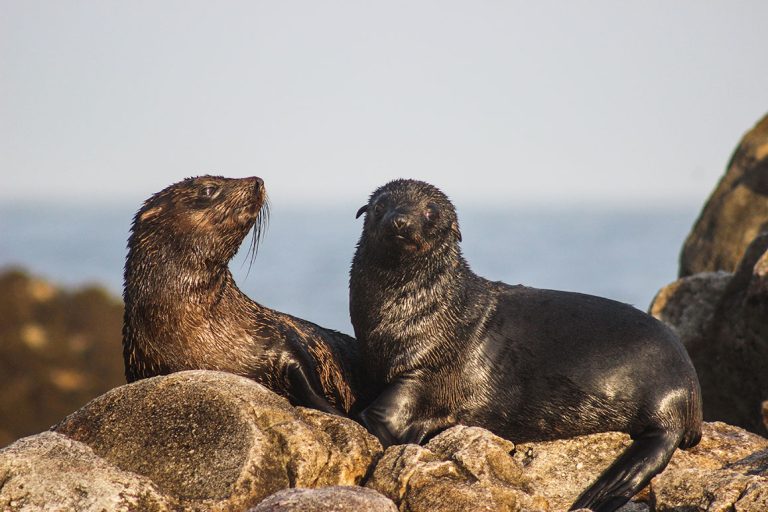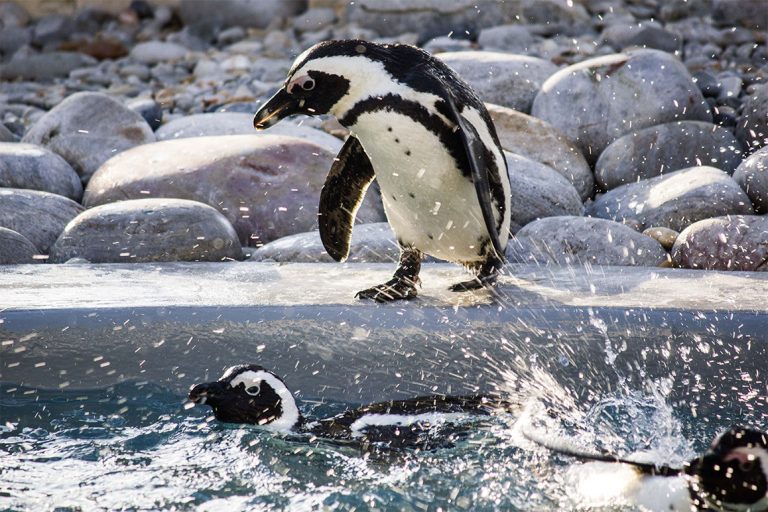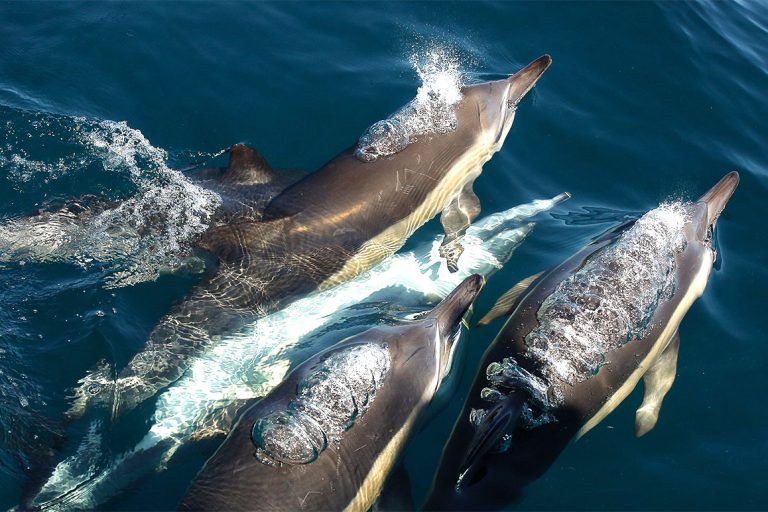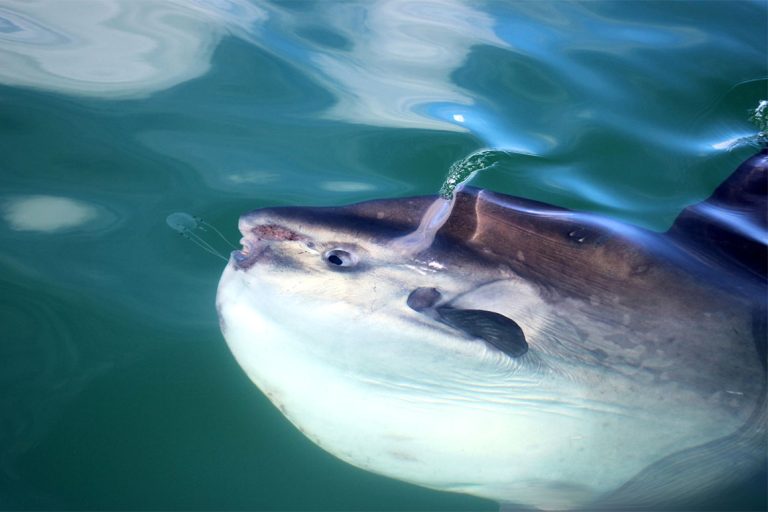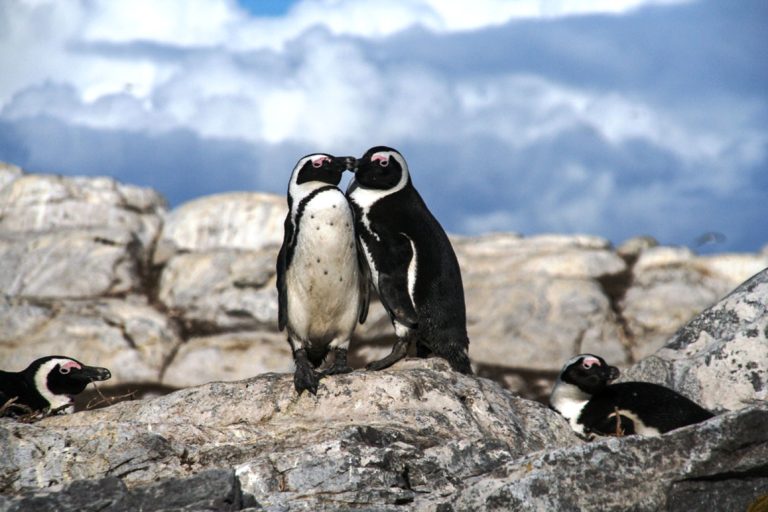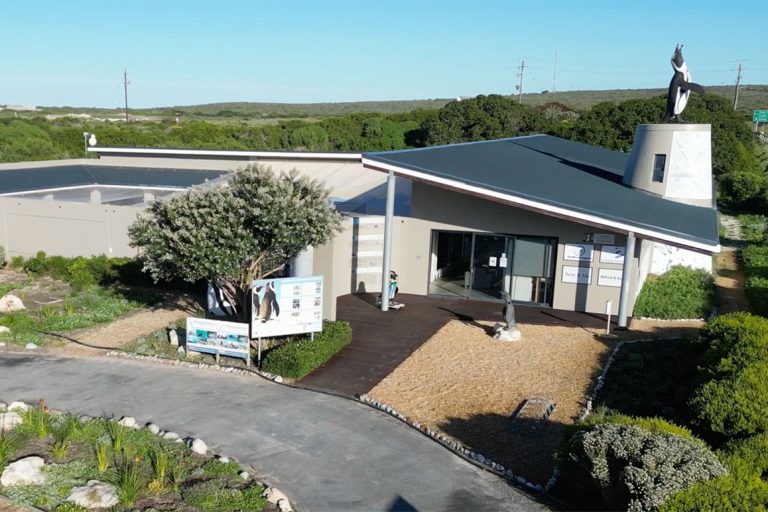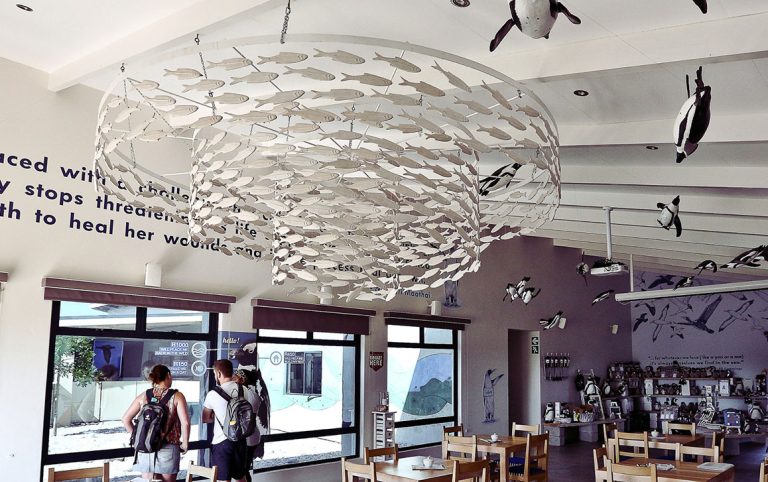- Overview
- Itinerary
- Seasons
- Rates
- Included
- Excluded
- Booking Terms
- Packing List
- Sustainabiiity
- Gallery
Embark on a Scenic Drive
Either self-drive or take a shuttle (from Cape Town or Hermanus) along the scenic Whale Coast Route to Gansbaai.
An Encounter with Nature’s Apex Predators
Come face-to-face with the ocean’s apex predators on a thrilling shark cage diving experience. Embark on a journey that blends adrenaline and discovery, as you encounter these majestic creatures in their natural habitat around Dire Island, leaving you with a deeper appreciation for these incredible marine animals.
The Dive Experience - An Expert Crew
The combination of a purpose-built vessel, well-designed shark viewing cage, professional crew, and high-quality gear creates an environment where you'll be able to appreciate the awe-inspiring beauty of sharks while feeling secure in the hands of experts who prioritise safety and comfort.
Beyond Shark Cage Diving - A Transformative Experience
Learn how marine biologists collect observational & environmental data to conserve and protect South Africa's sharks and other marine and coastal species. This shark cage diving experience is designed to accommodate individuals of all ages and abilities, ensuring that everyone can participate and enjoy the sight of these captivating apex predators. Both the venue and boat are wheelchair-friendly.
“We dive with sharks not to escape life, but for life not to escape us.” — Anon.
This is a self-drive day trip to the boat launch site in Gansbaai’s Kleinbaai harbour, a scenic 2.5 hour drive from Cape Town. However, transfers from Cape Town or Hermanus can be booked (see the Rates Tab).
Itineraries
Day X
Plan your trip

Booking
This day trip requires booking at least 2 days (48 hours) prior to your intended activity date. As soon as we receive your booking enquiry, we'll check the expected weather condition forecasts for the days ahead. If the weather forecast looks good, we'll confirm your requested date and raise an invoice for you to pay via either bank transfer or secure online credit.debit card transaction.
Of course, weather conditions can be unpredictable, so if ocean conditions are expected to be unsafe for launching the boat we'll advise you at least 12 hours before your booked date. You'll then be given the option of either a full refund or postponing for an alternative date.
Departure
Plan to leave home early as sea conditions are generally best in the mornings. If you have booked the shuttle service, the driver will collect you from your hotel or place of residence within the Cape Town or Hermanus areas at between 04:30 - 05:00 am.
Trip Duration
Plan to be away for about 10 - 12 hours. The road trip from Cape Town takes about 2.5 hours. The Dyer Island boat trip takes around 2 - 2.5 hours. Expect 2 - 3.5 hours for the pre- and post-cruise briefings, lunch, and the interactive session at the African Penguin and Seabird Sanctuary. Then allow another 2.5 hours for the return trip to Cape Town (or less if you're booking the shuttle and are being dropped off along the way).
Day X
Trip Briefing

Upon arrival at the venue (the Great White House) in Gansbaai you will enjoy a breakfast (or lunch depending on your trip time). You will then be assisted in choosing your correct wet suit size and other gear needed. A marine biologist will run through a pre-trip safety briefing, what to expect when you are out at sea, and what shark and other species are likely to be spotted.
Once you have your life jacket on, you'll take a short stroll down to the Kleinbaai harbour and board the 'The Slashfin' - an ocean vessel that resembles the remarkable qualities of the Great White Shark species after which it is named; sleek, streamlined and elegant with amazing power and steadiness to graciously slice through the water and effortlessly endure the most extreme sea conditions.
Day X
Boat cruise to Dyer Island

The travel time to Dyer Island is roughly 20 minutes. It will then take about 10 minutes to find the best spot on the shallows to anchor. Here we will settle in and distribute the wet suits in anticipation for entering the cage.
Viewing From The Boat
If you are not fond of the water and don’t see yourself getting into the cage, you can still enjoy views from the deck. There are a few deck positions that offer incredible views and opportunities to get some great photographs of the sharks. The boat will have a spare wet suit onboard in case you decide you want to get a closer look.
Day X
The Shark Cage Experience

On average, the boat anchors for two to three hours, but this depends on shark activity, sea, and weather conditions, as well as the number of divers onboard. The exact time period spent in the cage is not limited, but the aim is to give everybody the same experience, so your time is completely dependent on the shark activity for the day.
Scuba gear or snorkels are not needed as the cage top is always above the sea surface level. Pay close attention to the bait handler who will advise from which side the shark is approaching and he will instruct you as to which side to face as you go under the water. Then hold your breath as you come face to face with these apex predators as they swim past the cage.
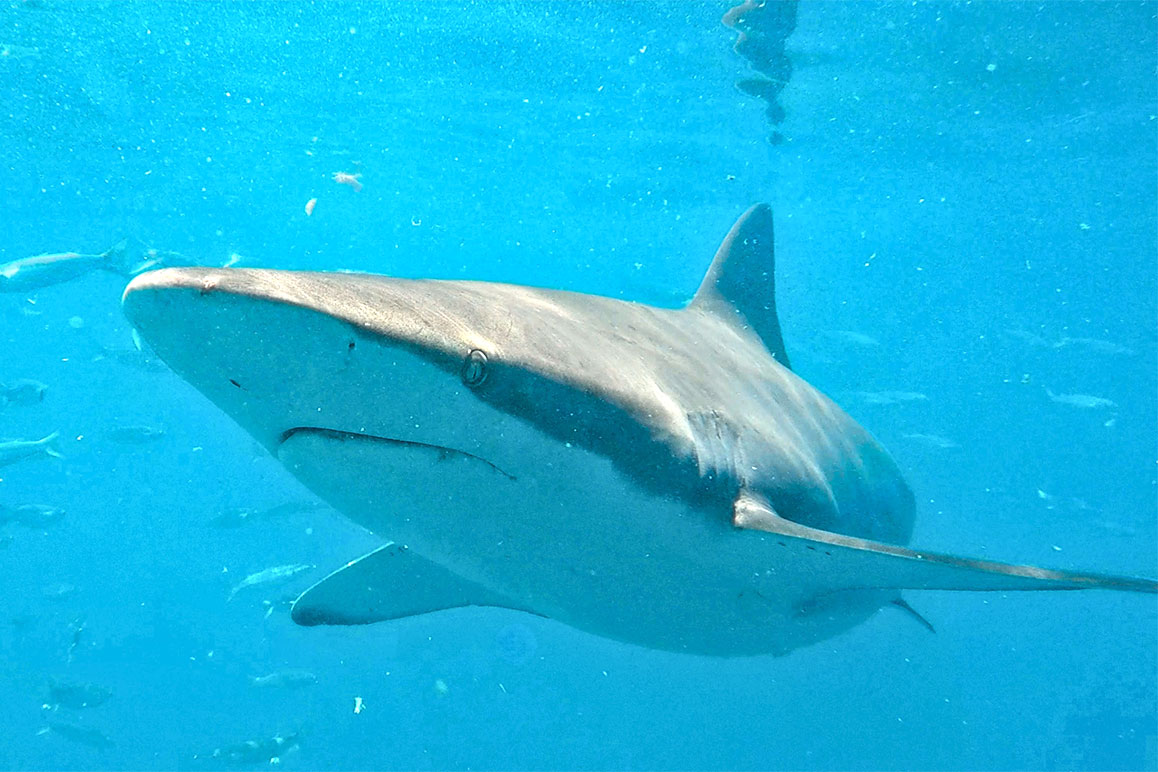
Day X
The Sharks Of Dyer Island
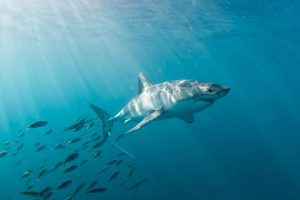
The waters around Dyer Island have one of the densest populations of Great White Sharks in the world. Attracted by the colony of roughly 60 000 seals on Geyser Rock, separated from Dyer Island by the world-famous Shark Alley, these apex predators are regularly sighted by thousands of visitors who visit the area to cage dive each year. This makes the area ideal for studying this apex predator.
Besides great white sharks, bronze whaler sharks and even Broadnose sevengill sharks are regular visitors. Stingrays and other marine species are often spotted on the way to and from the dive site.
Bronze whaler sharks grow up to 3,3m (10ft) and are very active around the boats. Great white sharks are a more solitary species, and we see sharks from 2m (6ft) to over 5m (16ft). Note that whilst the boat skipper knows the best places to view these sharks, sightings can vary.
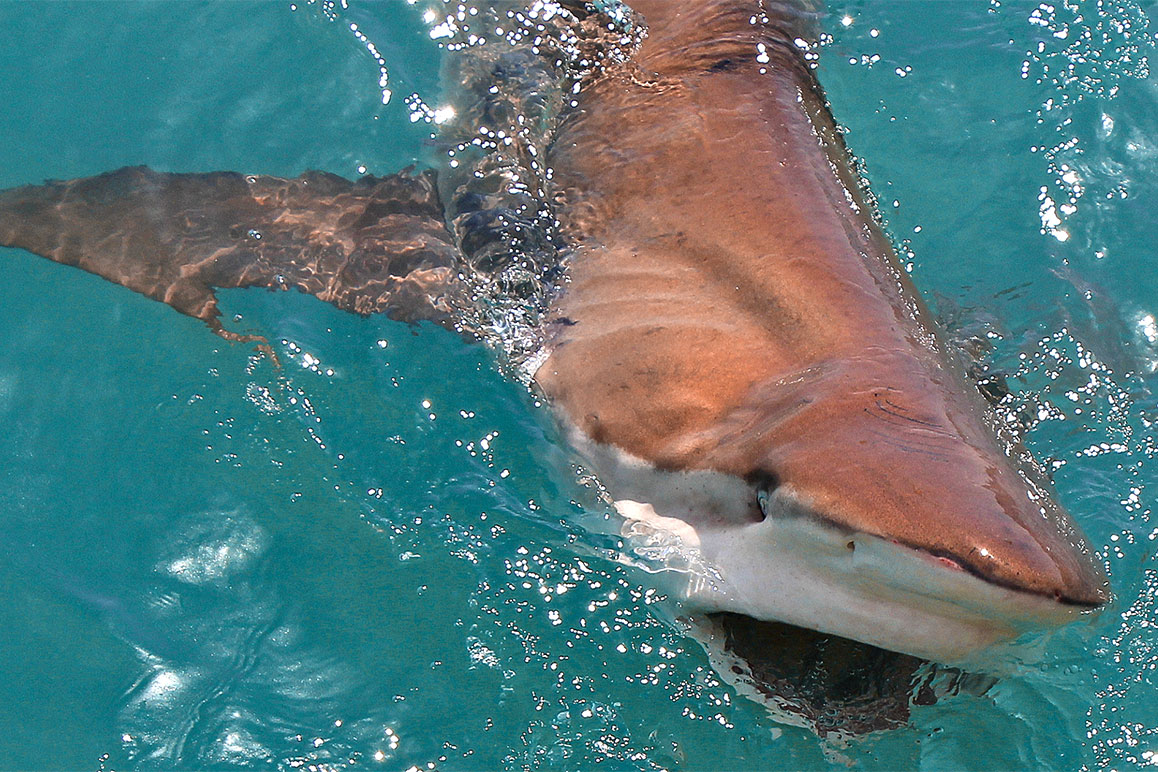
Day X
Unveiling Shark Secrets
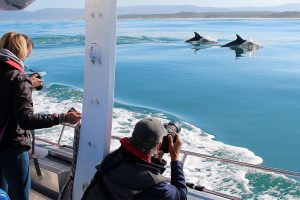
An onboard marine biologist will share knowledge about sharks that will entertain and inspire you. Learn about research projects and what these mean for the conservation of sharks in South Africa. While aboard the marine biologists will be taking fin identification photos and collecting other data. This information is added to an extensive database and contributes to scientific studies on white sharks. They also write a daily blog posts that sum up the day’s shark trip and share favourite photos of the day
Smile For The Camera
A dedicated videographer will also be onboard to capture all the moments of the trip for everyone to enjoy. Footage from the trip will be screened at the post-trip debriefing session and the video will be available for purchase (via a download link, which you can also use on your social channel posts).
Day X
An Ethical Interaction
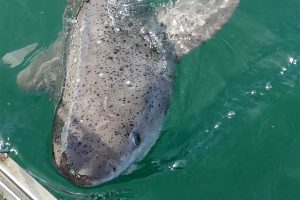
Great white sharks are almost impossible to see without attracting their attention. The method used to attract sharks to the vessel by using a mixture of fish oils or fish by products, known as chum. This is mixed with sea water and then put back into the ocean. This chum produces a scent trail extending from the boat that sharks in the area pick up on and will then start to approach. The chum is premixed to ensure it is not too offensive to guests. Once the sharks are around the boat, a bait or decoy is used to keep the shark’s attention. There are many natural sources of chum in the ocean such as by products from seal colonies or dead animals. When doing research scientists also use chum to bring sharks close to vessels to view or to tag.
Please note there is no feeding of the sharks. Provisioning or feeding of great white sharks has never been permitted within the code of conduct for South African white shark diving activities.
High Season: June to September
As a rule of thumb, the chances of seeing sharks during South Africa’s winter months are extremely high. This is also the time when the Southern Right Whales visit our shores to mate, calve and raise their young.
Mid Season: March to May & October to November
The weather in Autumn and Spring is as moody and changeable as the sea and can vary from hot to cold in a day. Whales may have migrated while the change of seasons will at most only influence the amount of sharks one encounters during a trip. However, some of the best sightings have occurred in Autumn – especially when the large (4m+) females arrive in the shallows!
Low Season: December to February
Weather-wise, these summer months are the best for a boat trip at sea in the Gansbaai area! Warm sunny days, clear skies, no wind or rain, and nearly perfect sea conditions . . . Ironically, the Great Whites do not necessarily share our view of “good weather” and often take off to “cooler pastures”!
Having said that, nothing in nature is cast in stone and sightings can vary daily from very good to below average, and there is still a 90% chance of seeing sharks. With wildlife there are no guarantees, but you can always be assured of a most enjoyable boat trip along our scenic coastline and meeting other members of our extraordinary marine wildlife – penguins, seals and various pelagic birds. Encountering pods of dolphins may just be an unexpected bonus!
Adults
$170
per person
(Excluding road transport)
Children
$98
5-12 years old
(under 5 free)
Shuttle 1
$54
Cape Town return
(per person)
Shuttle 2
$38
Hermanus return
(per person)
- Coffee/Tea & Muffins on arrival
- Safety & conservation briefing
- Wetsuite
- Boat cruise
- Light lunch
- African Penguin and Seabird Sanctuary visit
- Conservation fee
- Road transportation to & from Gansbaai
- Items of a personal nature
- Gratuities
- Rates are per person, per itinerary
- This trip is weather dependent
- Requires booking confirmation 48 hours prior to the day
- Wear warm clothing as it is colder at sea than on land
- Pack a light wind breaker jacket or an umbrella/raincoat as the weather in Cape Town can change quickly
- Bring sunglasses, a hat, and sunscreen as you’ll be spending time outdoors
- Pack any prescribed medications that you may need to take during a 6 to 12 hour excursion.
- Anti-seasickness medication is advisable if you are prone to motion sickness.
Sustainable Development Impact
While the United Nations Sustainable Development Goals (SDGs) are global concerns, and not aimed specifically at the travel and tourism industry, target 8.9 of the 2030 Agenda aims to "by 2030, devise and implement policies to promote sustainable tourism that creates jobs and promotes local culture and products". In this regard, tourism has the potential to contribute, directly or indirectly to all 17 SDGs.

Our partner, Marine Dynamics, is committed to sustainable tourism and aims to achieve the triple-bottom line outcomes of sustainable development i.e. Economic growth, environmental integrity, and social justice. The company is Fair Trade Tourism certified - an annually audited process that certifies fair wages and working conditions, fair purchasing and operations, equitable distribution of benefits and respect for human rights, culture and the environment. In addition, the company's vessels are endorsed by Blue Flag - a prestigious, voluntary eco-label for beaches, boats and marinas that is recognised as a trusted symbol of quality by the World Tourism Organisation as the most well- known global eco-label. The company is also a founding member of, and financial contributor to, the Dyer Island Conservation Trust and the African Penguin and Seabird Sanctuary.
Considering the above, Naturecrazi allocates our partners SDG "qualifying criteria" as follows:
- SDG 1: Creates fixed term and permanent job opportunities for local communities.
- SDG 2: Actively engages in community feeding schemes and food growing agricultural projects.
- SDG 3: Works with local community health clinics.
- SDG 4: Contributes to sustainable local community development through education programs and research.
- SDG 6: Provides for careful handling and disposal of solid waste and sewage. Uses alternative, sustainable means of water acquisition and reduces water consumption.
- SDG 7: Meets its energy needs through passive design and renewable energy resources.
- SDG 8: Provides decent work and economic growth for the community.
- SDG 11: Aims to make human settlements inclusive, safe, resilient, and sustainable.
- SDG 12: Encourages sustainable consumption and production through various measures, including the management of materials that are toxic to the environment.
- SDG 13: Takes action to combat climate change and its impacts by improving education and awareness-raising on climate change mitigation, adaptation, impact reduction and early warning.
- SDG 14: Conserves and sustainably uses the oceans, seas and marine resources for sustainable development.
- SDG 15: Conserves and rehabilitates the surrounding flora and fauna. Offers educational interpretive programmes to both its employees and tourists about the surrounding natural and cultural environments.
- SDG 16: Promotes peaceful and inclusive societies for sustainable development, provides access to justice for all and builds effective, accountable, and inclusive institutions at all levels.


